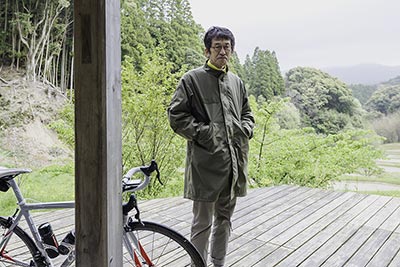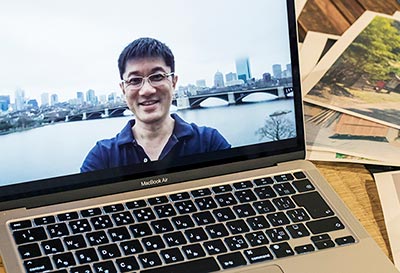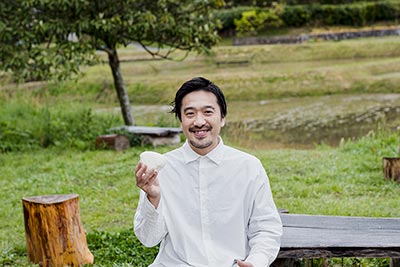- ExhibitionsTOTO GALLERY·MA
- Upcoming Exhibitions
- Past Exhibitions
- ExhibitionsExternal Locations
- Current Exhibitions
- Upcoming Exhibitions
- Past Exhibitions
- Lectures
- Upcoming Lectures
- Past Lectures
- Visitor Information
- Directions
- Gallery Infomation
- Museum Shop
- Bookshop TOTO
Cultural Activities
TOTO GALLERY·MA
TOTO Publishing
Bookshop TOTO

Exhibition Concept
How is Life?——Designing for Earth
The period of growth since the advent of the Industrial Revolution has taken us to a point beyond the planetary boundaries*1, as we continue to exploit the voiceless and overdraft from future generations, while climate change and the North/South divide escalate at increasing speeds. The United Nation’s sustainable development goals implore us to reduce our environmental impact while holding onto industries that drive growth and provide us with the easy life, but the reality is dire, and now we must start thinking about prosperity without growth*2 rather than sustainable growth. We must look at not just industries, but how we live, and examine how we can reduce our burden on earth in every aspect, every component of life itself. Long accustomed to acquiring goods and services from the industrialized economy, we no longer have the skills to obtain food, clothing, shelter, and energy on our own, and the nexus of industrialized society does not allow for convenient escape from its grasp. It is not easy to subvert the production-consumption-disposal paradigm, which is entrenched in the built environment developed in the second half of the twentieth century in which we continue to live. The self-portrait we have until now has been the constant replication of a built environment and convenient lifestyle based on the same assumptions. How do we escape from this pernicious cycle so that we can begin to live in an era of prosperity without growth?
If architecture is about the betterment of people’s lives, the work of architects should begin with the discovery — and triumph over — such encirclements. It is likely that the people sharing the same table at that time are not just us, here and now, but also disenfranchised people, people in other parts of the world, people of the future, and non-human creatures. We ask them, and ourselves, too: “How is Life?” We pose this question here, in the form of an architectural exhibition.
The period of growth since the advent of the Industrial Revolution has taken us to a point beyond the planetary boundaries*1, as we continue to exploit the voiceless and overdraft from future generations, while climate change and the North/South divide escalate at increasing speeds. The United Nation’s sustainable development goals implore us to reduce our environmental impact while holding onto industries that drive growth and provide us with the easy life, but the reality is dire, and now we must start thinking about prosperity without growth*2 rather than sustainable growth. We must look at not just industries, but how we live, and examine how we can reduce our burden on earth in every aspect, every component of life itself. Long accustomed to acquiring goods and services from the industrialized economy, we no longer have the skills to obtain food, clothing, shelter, and energy on our own, and the nexus of industrialized society does not allow for convenient escape from its grasp. It is not easy to subvert the production-consumption-disposal paradigm, which is entrenched in the built environment developed in the second half of the twentieth century in which we continue to live. The self-portrait we have until now has been the constant replication of a built environment and convenient lifestyle based on the same assumptions. How do we escape from this pernicious cycle so that we can begin to live in an era of prosperity without growth?
If architecture is about the betterment of people’s lives, the work of architects should begin with the discovery — and triumph over — such encirclements. It is likely that the people sharing the same table at that time are not just us, here and now, but also disenfranchised people, people in other parts of the world, people of the future, and non-human creatures. We ask them, and ourselves, too: “How is Life?” We pose this question here, in the form of an architectural exhibition.
TOTO GALLERY・MA Special Exhibition How is Life?
Curators
Yoshiharu Tsukamoto, Manabu Chiba, Seng Kuan, Tsuyoshi Tane
Curators
Yoshiharu Tsukamoto, Manabu Chiba, Seng Kuan, Tsuyoshi Tane
References
*1 Johan Rockström et al., "A Safe Operating Space for Humanity," Nature, 461, no. 7263 (24 September 24, 2007): pp. 472–85.
*2 Tim Jackson, Prosperity without Growth: Economics for a Finite Planet (London: Earthcan, 2009).
*1 Johan Rockström et al., "A Safe Operating Space for Humanity," Nature, 461, no. 7263 (24 September 24, 2007): pp. 472–85.
*2 Tim Jackson, Prosperity without Growth: Economics for a Finite Planet (London: Earthcan, 2009).
TOTO GALLERY・MA Special Exhibition How is Life? Curator Profiles
Yoshiharu Tsukamoto
Architect. Born 1965. Graduated from the Tokyo Institute of Technology (Tokyo Tech) in 1987. Studied at the École Nationale Supérieure d'Architecture de Paris-Belleville from 1987 to 1988. Founded Atelier Bow-Wow with Momoyo Kaijima in 1992. Withdrew from the doctoral program at Tokyo Tech in 1994 after completing all coursework. Received a PhD in
Engineering in 1996. Has taught as a visiting professor at UCLA, Harvard GSD, Columbia GSAPP, Cornell AAP, and KADAK, among other institutions. Currently a professor at Tokyo Tech.

©Anna Nagai
Manabu Chiba
Architect. Born 1960. Graduated from The University of Tokyo (UTokyo) in 1985. Completed a master’s degree at UTokyo in 1987. Worked as an employee at Nihon Sekkei, a co-principal of Factor N Associates, an assistant of the UTokyo Campus Planning Office, and an assistant of the UTokyo Tadao Ando Laboratory before founding Chiba Manabu Architects and becoming an associate professor at UTokyo in 2001. Visiting professor at ETH Zurich from 2009 to 2010. Professor at UTokyo since 2013.

©Anna Nagai
Seng Kuan
Architectural historian. Born 1976. Completed a PhD at the Harvard Graduate School of Design (Harvard GSD) in 2011. Currently a project associate professor of the Sekisui House - Kuma Lab at The University of Tokyo and a lecturer at Harvard GSD. Specializes in contemporary Japanese architectural history. Chief editorial advisor of A+U since 2021.

©Anna Nagai
Tsuyoshi Tane
Architect. Born 1979 in Tokyo. Based in Paris. Principal of Atelier Tsuyoshi Tane Architects (ATTA). Graduated from the Hokkaido Tokai University. Worked at Henning Larsen and Adjaye Associates before founding DGT. (Dorell Ghotmeh Tane / Architects) in 2006 and ATTA in 2017.

©Anna Nagai
Copyright © TOTO LTD. All Rights Reserved.







